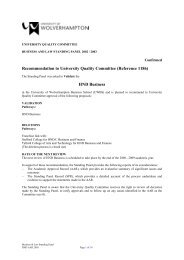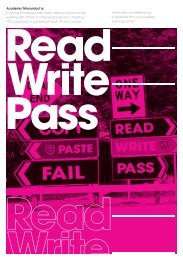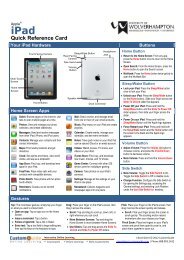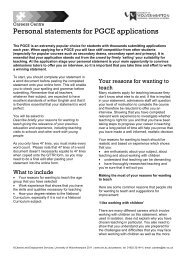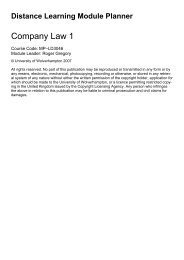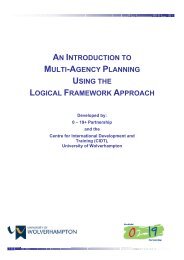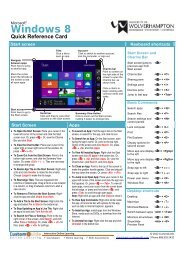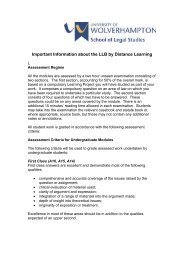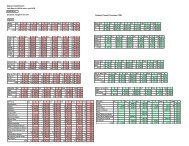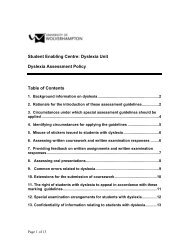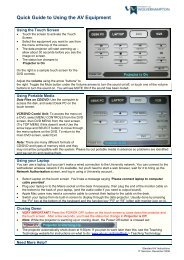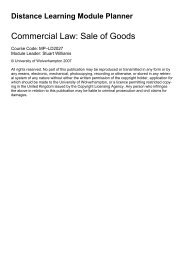This activity can be found in Pretty et al, (1995) - University of ...
This activity can be found in Pretty et al, (1995) - University of ...
This activity can be found in Pretty et al, (1995) - University of ...
- No tags were found...
Create successful ePaper yourself
Turn your PDF publications into a flip-book with our unique Google optimized e-Paper software.
06 MTF3What tasks <strong>can</strong> we use to ensure a facilitative approach to content?ObjectiveTo raise participants awareness <strong>of</strong> a range <strong>of</strong> m<strong>et</strong>hods and tasks that <strong>can</strong> <strong>be</strong> used, andwhere they f<strong>al</strong>l on the Directive – Facilitative cont<strong>in</strong>uum.Time45 m<strong>in</strong>utesMateri<strong>al</strong>sDirective-Facilitative cont<strong>in</strong>uum; HO 06 MTF3.1 - Task typesTask & OrganisationInput for task: participants own perceptions3.1 (5 m<strong>in</strong>utes – plenary) Elicit from participants and record as manytra<strong>in</strong><strong>in</strong>g/facilitation m<strong>et</strong>hods as possible (e.g. lecture/presentation; role play; groupactivities; demonstration; plenary discussion; case studies <strong>et</strong>c. List these onflipchart.3.2 (5 m<strong>in</strong>utes – groups) Ask participants to identify where these m<strong>et</strong>hods f<strong>al</strong>l on theirdisplayed Directive – Facilitative cont<strong>in</strong>uum (from MTF1) and to write them <strong>be</strong>lowthe cont<strong>in</strong>uum l<strong>in</strong>e.3.3 (5 m<strong>in</strong>utes – plenary) When they have compl<strong>et</strong>ed the task above expla<strong>in</strong> that forthe purpose <strong>of</strong> this course we are more concerned with those that f<strong>al</strong>l <strong>in</strong> the middleand mov<strong>in</strong>g towards the ‘facilitative’ end <strong>of</strong> the cont<strong>in</strong>uum. Introduce the concept <strong>of</strong>tasks as a means <strong>of</strong> <strong>in</strong>troduc<strong>in</strong>g participants to ‘content’ <strong>in</strong> a more facilitative way.Give participants HO 06 MTF3.1 which shows a range <strong>of</strong> task types.3.4 (10 m<strong>in</strong>utes – 5 groups) Ask participants to identify how they could use each tasktype to <strong>in</strong>troduce and develop understand<strong>in</strong>g <strong>of</strong> ‘content’ <strong>in</strong> a workshop for G1 to 4teachers on develop<strong>in</strong>g students’ skills <strong>in</strong> a particular area, e.g. writ<strong>in</strong>g,multiplication. Give them an example to illustrate e.g. we could ask teachers torank a s<strong>et</strong> <strong>of</strong> activities from those which most require read<strong>in</strong>g for understand<strong>in</strong>g tothose which require only visu<strong>al</strong> match<strong>in</strong>g.Give each group a different s<strong>et</strong> <strong>of</strong> tasks types to look at Group 1 - (bra<strong>in</strong>storm,rank, sequence); Group 2 - (classify, select, reflect); Group 3 - (compare, arrange,ev<strong>al</strong>uate); Group 4 - (match, map, design); Group 5 - (adapt, create, predict);OutputList <strong>of</strong> possible task types for each <strong>activity</strong>Feedback(10 m<strong>in</strong>utes – w<strong>al</strong>karound display) Groups browse the f<strong>in</strong>d<strong>in</strong>gs and add their owncomments and ideas to others she<strong>et</strong>s.65 Jamaica All Age Schools Project: Facilitator Tra<strong>in</strong><strong>in</strong>g for School Based Resource Teachers



